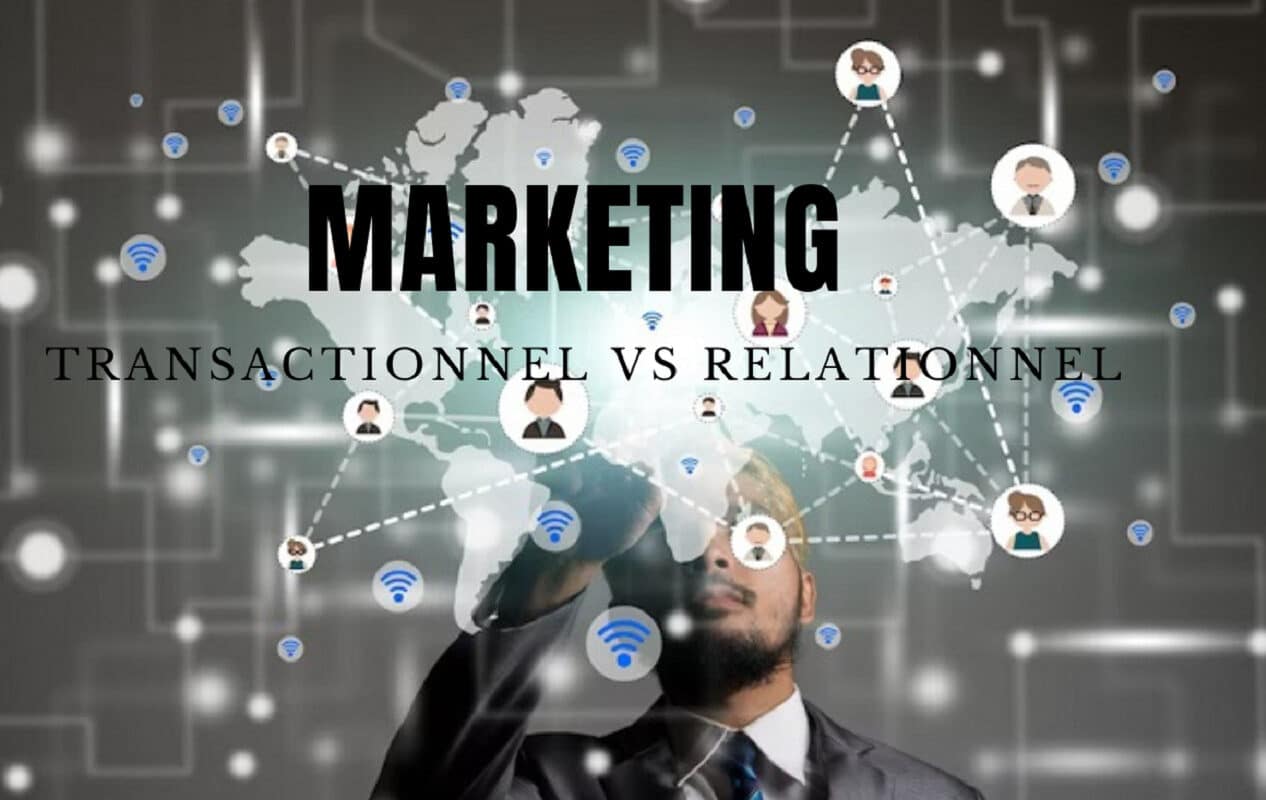Transactional marketing and relationship marketing are two different approaches to business exchange. Transactional marketing is an approach that focuses on the transaction, i.e. the act of buying and selling, while relationship marketing focuses on the relationship between the company and the customer.
Transactional marketing: the importance of the transaction
Transactional marketing focuses on the act of buying and selling a product or service. This is a traditional approach that focuses on selling items or services to a customer. For this approach, the main objective is to complete a transaction. The company does not care about the durability of the relationship with the customer, but rather about making an immediate sale.
Targeting customers strategically
Customer segmentation is a common strategy used in transactional marketing. Companies target groups of customers based on their age, gender, location, interests and buying behavior. This allows them to create offerings that suit each customer segment and reach a wider audience. The company can also use sales techniques, such as urgency and scarcity, to encourage each prospect to complete a transaction.
The possibility of generating short-term income
Transactional marketing can bring several benefits to firms. First of all, it can generate income in the short term. Indeed, the quick sale of products and services allows to generate immediate revenues. In addition, transactional marketing can help reach new prospects. By targeting different customer segments, the company can reach a wider audience.
Offer quality services
Transactional marketing is based on offering quality products or services at an attractive price and at the right time. Transactional marketing tools include processes such as promotions, discounts and advertising.
Objective: to sell as many products as possible
Transactional marketing is often used for mass sales, where the goal is to sell as many products as possible to as many customers as possible. The objective is to attract new leads and make quick sales, without worrying about the durability of the relationship with the customer.
Relationship marketing: customer relations first

Relationship marketing is a modern approach that focuses on creating a lasting relationship between the company and the customer. It is a modern approach that focuses on customer loyalty and the importance of the relationship between the company and the customer.
Taking care of the relationship with the customer
In relationship marketing, the company views the customer as a long-term partner, rather than a simple exchange.
Relationship marketing is a marketing strategy that involves developing and maintaining long-term relationships with prospects by focusing on their satisfaction and loyalty. Relationship marketing has become increasingly important over the years as companies have found that retention is more profitable than acquiring new customers.
Marketing based on CRM
Relationship marketing is based on the implementation of a customer relationship management (CRM) system, which allows the collection and analysis of consumer data to better understand their needs and preferences. Relationship marketing tools include techniques such as sending personalized emails, personalizing the shopping experience and creating relevant content.
For long-term sales
Relationship marketing is often used for long-term sales, where the goal is to retain existing prospects and build a long-term, trusting relationship with them. The objective is to create a lasting relationship with the customer, based on trust and satisfaction.
Considering customer engagement
Relationship marketing also focuses on engaging customers through various communication channels. Companies can use social networks to interact with consumers, responding to their comments and providing them with interesting information. Blogs and newsletters are also commonly used tools to keep customers engaged.
Both business approaches have their own strengths. However, the results can be optimized by combining marketing automation with a chatbot.
The advantages of chatbots combined with marketing automation
The chatbot, coupled with marketing automation, can offer many benefits in relationship marketing and customer experience for a company. By using automation techniques, you can personalize interactions with consumers at each stage of the sales tunnel, which can improve customer relationships and increase numbers.
Provides a personalized customer experience
By integrating a chatbot into the marketing automation strategy, you can deliver a more personalized and faster customer experience. The chatbot can instantly answer customers’ questions, provide information about items or services, and direct them to useful resources. This instant interaction can also help resolve issues quickly, improve customer satisfaction and build trust in the company.
Collects customer data
The chatbot can also help companies collect customer data. Using machine learning algorithms, the chatbot can collect and analyze information from each consumer, such as:
- Favorite items and services;
- Purchasing behaviors;
- Communication preferences and contact information.
This analysis can help companies better understand their customers’ needs and provide customized offerings that meet those needs and thus satisfy them.
Continuous communication with customers
Marketing automation also helps to maintain constant interaction with customers and keep them informed of the latest offers, promotions and available items. Chatbots can be programmed to send personalized emails and messages at key points in the sales funnel, making consumers feel more involved in the buying process.
Provides after-sales services for customers
Finally, the chatbot can improve customer loyalty by offering a quality after-sales service. Consumers can have access to 24/7 customer support, which can improve the customer experience and increase customer satisfaction in all settings. It can also help companies solve all types of problems quickly, increase the value of the company and build customer loyalty.
The choice between transactional and relationship marketing depends on the company’s objectives and strategies. Transactional marketing focuses on the act of purchase, while relationship marketing focuses on the long-term customer experience. However, both approaches can be combined to maximize results. In this context, the use of a chatbot coupled with marketing automation can offer significant advantages in terms of personalization and an optimal relationship with each prospect. Companies must therefore assess their needs, resources and customer expectations to choose the best marketing approach, keeping in mind that tools such as chatbots can significantly improve their performance.
